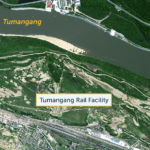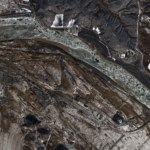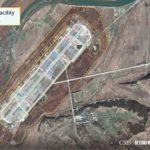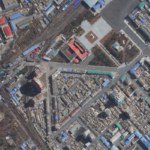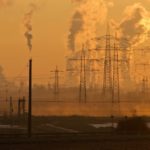May 21, 2025, by Joseph S. Bermudez Jr., Victor Cha and Jennifer Jun—
Imagery shows dramatic increases in Sino-North Korean trade at the lesser-known Wonjong-ni-Quanhe border crossing over the past few years... Overview of Wonjong-ni-Quanhe border crossing, March 21, 2025. Copyright © 2025 by Maxar Technologies. Image may not be republished without permission. Please contact imagery@csis.org. There...
April 16, 2025, by Joseph S. Bermudez Jr., Victor Cha and Jennifer Jun—
The new road bridge at the Tumangang-Khasan border constitutes more evidence of the burgeoning strategic partnership between Russia and North Korea. However, Recent satellite imagery shows the construction of the road bridge has stalled... Overview of the road bridge construction site at the Tumangang-Khasan border, March 28. 2025. Copyright…
December 18, 2024, by Joseph S. Bermudez Jr., Victor Cha and Jennifer Jun—
The ongoing high levels of rail traffic and major modernization of rail facilities at Tumangang indicates that the strategic relationship between North Korea and Russia continues to grow... Close-up of the new canopy being constructed over the modernized rail station at Tumangang Rail…
September 30, 2024, by Joseph S. Bermudez Jr., Victor Cha and Jennifer Jun—
Satellite images of the NK-China border indicate that trade between the two countries is gradually recovering to pre-pandemic levels. However, this restoration of trade was upended when unusually heavy rains struck the area in late July... Overview of the Dandong, Sinuiju, and Uiju Areas, September 8, 2024. (Copyright © 2024 by…
August 8, 2024, by Joseph S. Bermudez Jr., Victor Cha and Jennifer Jun—
Beyond Parallel reviewed satellite imagery of the Russia-North Korea border at the Tumangang-Khasan railroad crossing from early February to mid-July 2024, a few months before and a few weeks after Russian President Vladimir Putin’s visit to North Korea on June 18. The analysis between February and July 2024 shows a new railcar traffic pattern at the Russia-North Korea border.
October 6, 2023, by Joseph S. Bermudez Jr., Victor Cha and Jennifer Jun—
A few weeks after the Kim-Putin summit, satellite imagery show an unprecedented level of rail traffic at the DPRK-Russia border... Closeup of the Tumangang Rail Facility, October 5, 2023. Image shows an unprecedentedly high level of railcar traffic at the North Korean station at the...
February 17, 2023, by Joseph S. Bermudez Jr., Victor Cha and Jennifer Jun—
Analysis of recent commercially available satellite imagery of the Russia–North Korea railroad crossing suggests significantly increased energy and economic trade as Pyongyang seeks to tighten ties with Moscow... An approximate count of the railcars at Khasan and Tumangang shows the movement of railcars…
November 15, 2021, by Joseph S. Bermudez Jr., Victor Cha and Jennifer Jun—
Over 16 months after its shutdown of the border with China to prevent COVID transmission, North Korea has seen delays in its efforts to re-open commerce with its primary trade partner. The conversion of Uiju Airbase into a disinfection facility started in early 2021, but the most recent satellite imagery as of November 12 shows no signs of being operational, indicating a delay of at least six months from its original opening plans. Smaller-scale disinfection facilities at other crossings appear to be in development.
May 6, 2021, by Joseph S. Bermudez Jr., Victor Cha and Jennifer Jun—
Satellite imagery supports open-source reporting that the North Korea-China border has likely been closed to trade since January 2020 due to the North Korean government’s precautions against the transmission of the Covid-19 virus. However, a recent increase in the volume of rail cars in the Dandong and Sinuiju Customs areas, as well as the removal of protective coverings at the Sinuiju rail terminal and freight yard (between March 31 and April 1), suggest preparations to resume exports to China that would provide North Korea with some hard currency.
March 17, 2021, by Joseph S. Bermudez Jr., Victor Cha, Marie DuMond, Jonathan E. Hillman and Maesea McCalpin—
Although significant political barriers remain to reconnecting the Korean peninsula, there is merit in substantive study of the types of energy infrastructure connections that would best promote regional growth and stability. The cases examined in this report underscore North Korea’s dire need for energy infrastructure investment and the importance of it meeting the G20 quality infrastructure investment principles.





